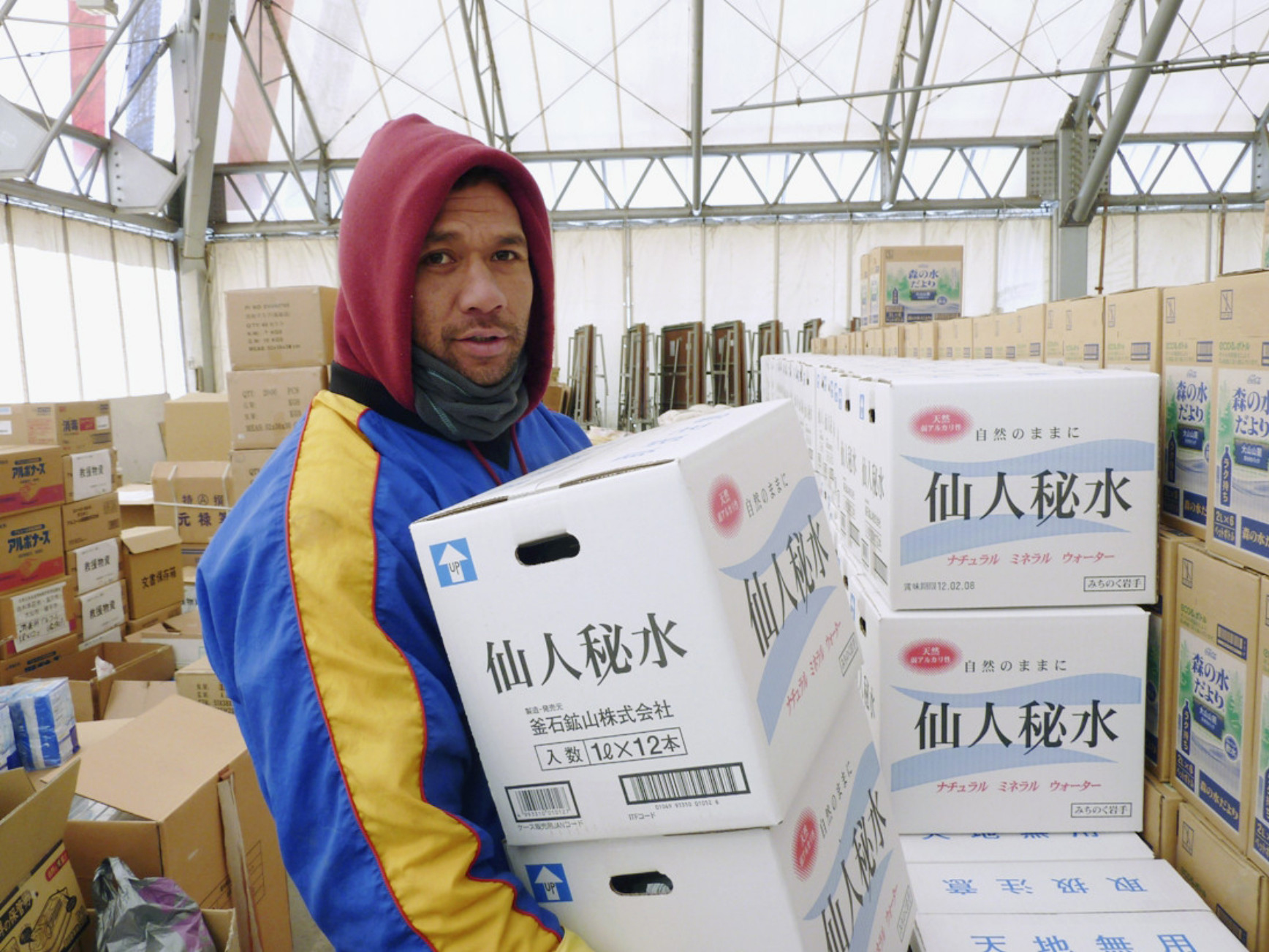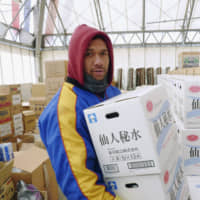March 11, 2011, is a date that will stick long in the memory of former All Black Pita Alatini, and not just because it was his birthday and he was in Japan.
Alatini, who played for the Kamaishi Seawaves rugby club, was finishing up a routine medical checkup when a magnitude 9 earthquake struck off the Pacific coast and triggered tsunami that killed over 1,000 people in the small fishing town.
Fortunately, Alatini and his family were safe, but he soon became aware of the destruction that would change the face of Kamaishi forever.
"As my teammates returned from town with footage from what they just experienced, it was obvious that we were in a serious state of emergency," Alatini recalled in an email interview just over 100 days before the Rugby World Cup starts in Japan.
Despite its modest size, the town in Iwate Prefecture is set to host two matches during the tournament and has been promoted as a symbol of reconstruction in the area devastated eight years ago.
Rugby could not have been further from the mind of most as Kamaishi struggled back to its feet after being flattened by the waves.
It would have been the easy option for Alatini and other foreign players, including Wallabies flanker Scott Fardy, to leave town, but the Tongan-born center said there was no way he could have abandoned Kamaishi.
"This place had given me a salary, Japanese education for my three kids and also we had a lot of close friends who really became our family away from home," said Alatini, who played 17 tests for the All Blacks, including two at the 1999 World Cup.
"So I couldn't just get up and leave. It was the hardest decision I've had to make as my family headed back to New Zealand.
"It was very tough being away from my family but they understood my reasoning and they fully supported my decision."
Alatini ended up staying in Kamaishi for a month to help with recovery efforts.
"I was also lucky that I was good company with my Australian mate Scott Fardy and a coach from New Zealand Paul Hodder," he added.
Alatini and the rest of the Seawaves players helped in any way they could, offloading supplies at relief centers and helping to move elderly patients from hospitals that had gone weeks without power.
All of his teammates survived, but some club staff, as well as family and friends, were among the missing. "We had known three family members who were very close to us that had lost their lives," he explained.
"There was definite motivation to stay because of those lives lost but it was more to be there to support our friends and families that had to deal with the loss of their livelihood and then rebuild their lives."
Kamaishi has long been a rugby town — Nippon Steel, a previous incarnation of the Seawaves, won seven national championships from 1979 to 1985 — and the club thought it imperative that to get back on the field to help boost morale.
"Rugby has been a huge influence in the community," explains Alatini, who was back in training two months after the disaster.
"It was important for our rugby program to get the town's blessing before we started and once that was confirmed our boys were ready to get stuck into the season."
Alatini says the close bonds built on the rugby field helped him, and Kamaishi, in the most difficult of circumstances.
"This is why I love our game," he said.
"You build relationships and a bond that requires you to trust those around you to get through the tough times. We had to call on this heavily during this period."
"I felt we had formed a special bond and one that will forever be in our hearts."




